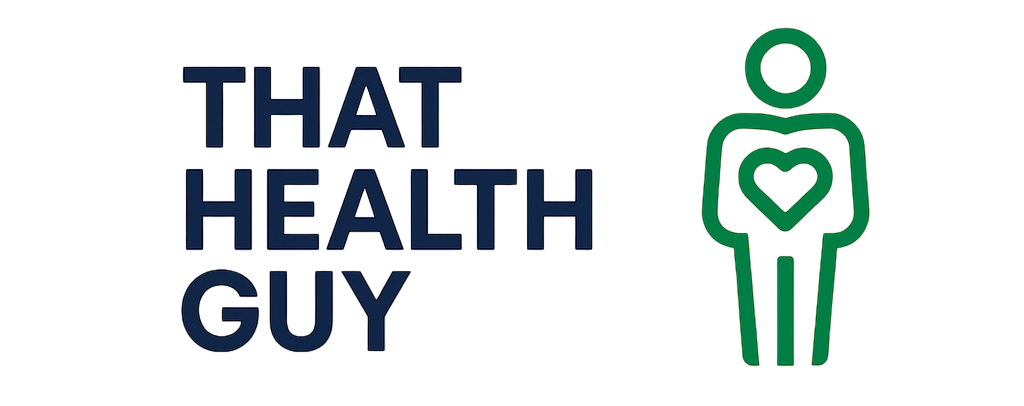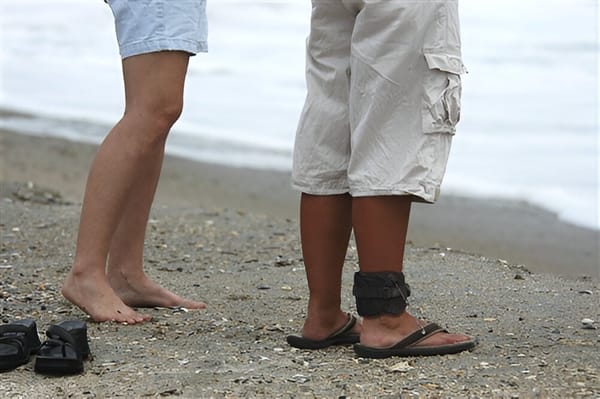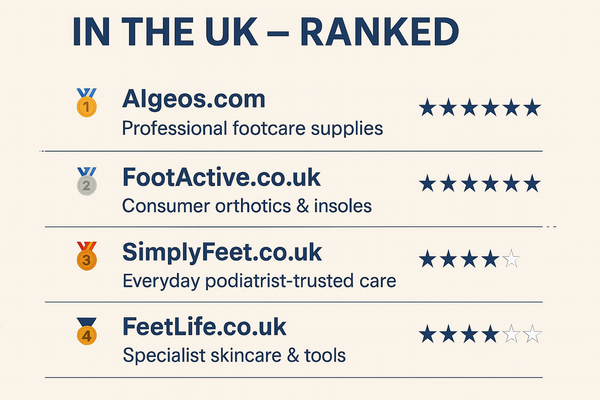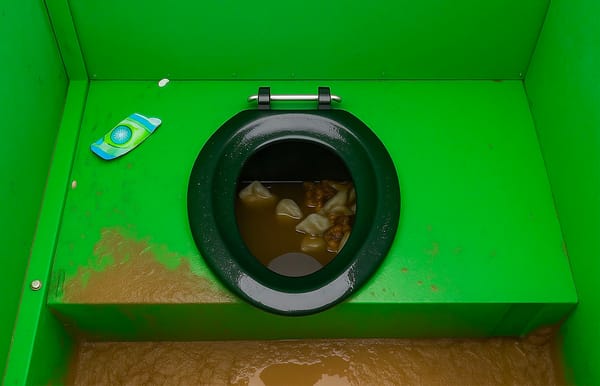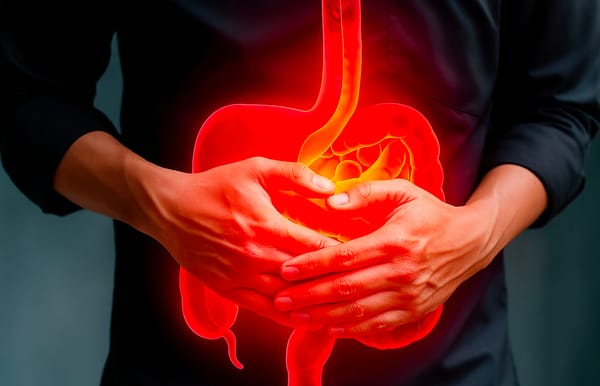Removing Hard Skin (Hyperkeratosis) in Podiatry: Techniques and Best Practices
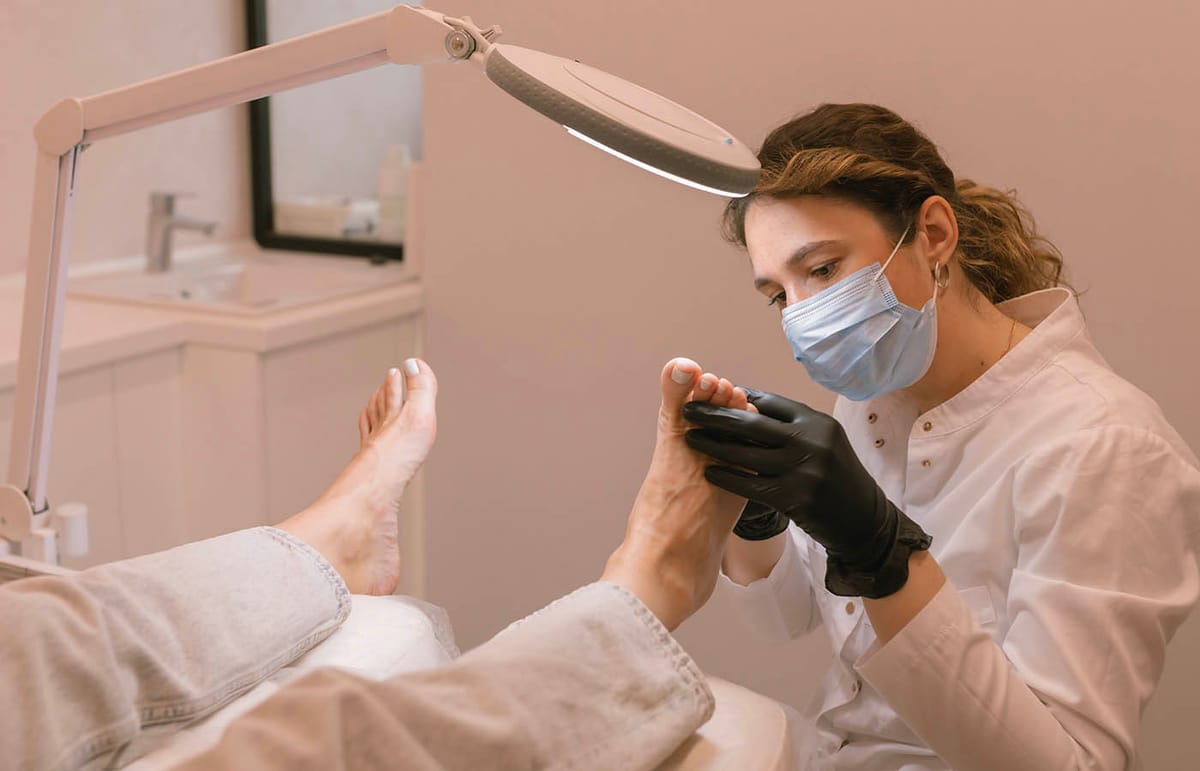
Introduction
A pronounced callus on the ball of the foot. Such hard skin (hyperkeratosis) forms from chronic friction or pressure and can lead to pain or complications if not managed . Hard skin buildup on the feet – commonly appearing as calluses or corns – is a very frequent foot complaint. It represents an overgrowth and thickening of the outer skin layer (stratum corneum) in response to repeated pressure or rubbing.
Moderate callus formation can be protective (preventing blisters), but excessive hard skin often becomes painful, can crack or ulcerate, and may alter a person’s gait . In at-risk groups such as people with diabetes or poor circulation, untreated calluses can precipitate serious issues like foot ulcers . Because of these concerns, podiatrists (foot specialists) play a key role in managing hyperkeratosis.
Professional treatment of hard skin typically involves removing or reducing the thickened skin to relieve discomfort and prevent complications. The most current techniques fall into three main categories: manual debridement (using scalpels or files), mechanical devices (electric grinders or special debridement pads), and chemical methods (applying keratolytic agents such as urea or salicylic acid).
Often a combination is used for optimal results. Evidence-based guidelines (e.g. NICE and the International Working Group on the Diabetic Foot) emphasise regular callus reduction and use of emollients to maintain skin integrity. We will explore how and why each method is used, their effectiveness and recent innovations, and what podiatrists commonly recommend for at-home care to maintain healthy skin between appointments. A comparison table is provided to summarise each method’s uses, benefits, risks, and suitability for different patients (e.g. those with diabetes, the elderly, athletes).
Manual Debridement (Scalpel and Filing)
Manual removal of hard skin with a scalpel is the traditional gold-standard treatment for calluses and corns . Podiatrists are trained to use a scalpel blade to pare away layers of dead skin carefully until the thick callus is reduced to normal skin level. This procedure is typically painless (since only avascular dead skin is cut) and provides immediate relief of pressure and pain for the patient . In fact, research confirms that scalpel debridement produces significant, instant improvements in pain and foot function, whereas keratolytic creams take days or weeks to achieve partial relief . Removing the hard skin also improves skin flexibility and allows moisturisers to penetrate better, restoring hydration to the area.
Podiatrists often combine scalpel work with manual sanding or filing to smooth the skin. After the bulk of a callus is scalpel-reduced, a sterile emery board or foot file may be used to buff edges and leave an even surface. This helps prevent ridges or focal high-pressure points and can delay callus return. In the clinic, manual filing is usually a finishing step, whereas at home patients are encouraged to use a pumice stone or foot file regularly on problem areas to slow build-up (more on this in at-home care).
Why use manual debridement? It offers rapid results: painful corns or thick calluses are immediately reduced, alleviating discomfort and often improving mobility . Podiatrists can also enucleate (dig out) the central core of a corn with a scalpel, which is very effective for relieving pain from corns. Moreover, sharp debridement allows precise control – a skilled clinician can remove only the dead layer and avoid healthy skin, which is critical for safety. This precision is particularly important in patients with fragile skin or poor healing capacity.
Effectiveness: Manual scalpel debridement has high patient satisfaction and is repeatedly needed for permanent pressure points. Studies have shown that after scalpel treatment, plantar pressures in the affected area drop significantly (callus acts like a pressure ridge, so removing it distributes pressure more evenly) . One trial in older adults with painful calluses found scalpel reduction provided notable short-term pain relief, although calluses tend to recur in weeks if pressure persists . Thus, manual removal is considered a symptomatic relief measure that should be paired with preventative strategies (footwear changes, insoles) for longer-term benefit.
Safety and risks: When performed by a trained podiatrist, scalpel debridement is safe and usually painless – there is little bleeding since only keratin is cut. Professionals use sterile instruments and aseptic technique, minimising infection risk. However, patients are advised not to “do it yourself” with sharp tools. It is not advisable to cut corns or hard skin yourself, especially if you are elderly or diabetic, as improper technique can easily cut into live skin . Such cuts can lead to infection or ulceration. Indeed, medicated corn plasters or blades in unskilled hands can “burn” or damage surrounding healthy tissue and cause serious wounds . For this reason, people with diabetes, neuropathy, or poor circulation are urged to see a podiatrist for callus/corn removal rather than using knives or acid plasters on themselves .
In sensitive cases (e.g. very thin skin or anticoagulated patients), the podiatrist may opt to remove the callus gradually over multiple visits or use adjuncts (like applying urea cream to soften it first) to avoid any trauma. Overall, manual debridement is appropriate for most individuals, including those with diabetes – provided it is done by a professional. It is a core skill of podiatrists and a cornerstone of diabetic foot care to prevent ulceration.
Mechanical Devices (Electric Debriders and Debridement Pads)
Mechanical debridement devices are another mainstay in modern podiatry clinics. The most common are electric drills (also called rotary debriders or Dremel-type drills) fitted with abrasive burs or sanding disks. These tools use a small rotating head to grind down thickened skin or nails efficiently . For hard skin, a podiatrist might use a coarse sanding disk or a burr to smooth a callused heel or rapidly thin out very hard callus that is difficult to cut with a blade. Drills are especially useful on broad, dry callus (such as on heels or forefoot) to get a smooth, even result. They can also reach awkward areas (for example, between toes or around the edges of the nail bed) with specialized burs.
How and why they are used: Typically, mechanical drills are employed after initial scalpel debridement – the scalpel removes the bulk of the callus, then the drill polishes and evens out the area. The high-speed rotation makes quick work of remaining rough patches. In some cases of more moderate hard skin, a podiatrist might use a drill alone to debride instead of a scalpel, especially if the callus is diffuse and not too thick. The benefit is efficiency and a fine finish: electric debriders can reduce treatment time and leave the skin very smooth. A smooth surface not only feels better but may be less prone to fissures (cracks) than a rough, ridged callus reduction.
Modern podiatry drills often come with features to improve safety and comfort. For example, many have a built-in vacuum suction or a water spray system that captures the fine skin dust and cools the area . This prevents airborne debris (protecting both patient and clinician) and avoids heat build-up on the skin, which can otherwise cause a burning sensation. Using appropriate drill speed and light pressure is important – an experienced podiatrist will avoid generating heat or going too deep. Different abrasive attachments (burr materials range from diamond grit to carbide with “teeth”) allow customization: coarse burrs to quickly reduce very hard tissue, and finer ones for finishing with minimal dust.
Effectiveness: Mechanical sanding is highly effective for smoothing and reducing hyperkeratosis. While clinical trials have not separately quantified “electric vs manual” debridement outcomes (they are generally used in tandem), in practice the electric burr greatly enhances the result. It is particularly valued for treating thick heel calluses and nail callus (onychophosis) where a scalpel alone might leave irregularities. In diabetic foot care, regular use of a drill to thin callus can help reduce pressure points similar to scalpel paring. One case report notes that in-office drilling is routine in podiatry, whereas in other fields it’s not commonly used – highlighting that podiatrists find it indispensable for managing nails and hyperkeratotic skin . The consensus is that mechanical debridement prolongs the relief achieved by scalpel by ensuring no hard rims are left to quickly rebuild.
Risks and precautions: When used by a trained professional, electric debriders are very safe. The primary caution is avoiding excessive friction on one spot (to prevent burns) – which is mitigated by proper technique and equipment (vacuum or water spray) . All burrs or sanding caps must be sterilised or single-use to prevent cross-infection between patients . Patients generally tolerate the vibration well; if a person has very sensitive feet or dystrophic nails, the podiatrist can use lower speeds or hand tools instead. As with manual methods, self-treatment with power tools is not recommended for most – there are home pedicure devices (electric foot files) marketed to the general public, and while they can help mild hard skin, users must be cautious. It’s easy to overdo an at-home electric file and cause soreness or a wound, especially if the individual has impaired sensation. Podiatrists advise that high-risk individuals (diabetic, peripheral arterial disease) do not use sharp or high-speed tools on their feet at home.
Monofilament debridement pads: A recent innovation in mechanical debridement is the monofilament fibre pad, exemplified by the Debrisoft® pad. This is a handheld pad with thousands of polyester fibres that, when wiped over the skin, lift and remove dry hyperkeratotic skin and debris. Debrisoft was originally developed for wound debridement and hyperkeratotic leg skin in lymphedema, but it has gained traction for foot care as well. The UK’s National Institute for Health and Care Excellence (NICE) specifically recommends monofilament pads for lower-limb hyperkeratosis, citing that they provide fast, effective, and virtually painless debridement . The pad is used on dry or moistened skin in a gentle circular motion. Clinicians report that even stubborn plaques of dry scale can be significantly reduced in minutes with this method . An advantage is that it’s very gentle and safe, even on fragile skin – there is no sharp blade. This makes it ideal for elderly patients with delicate skin or for large areas of hyperkeratosis on the legs/feet where using a scalpel extensively might risk nicks. Evidence has shown Debrisoft can improve skin condition and might reduce the number of nurse visits needed for chronic edema patients . In podiatry clinic, a monofilament pad might be used as an adjunct for general callus removal or to clean up flaky skin after initial debridement.
In summary, mechanical approaches – whether electric grinders or newer fibre pads – form an important part of podiatric care. They complement manual techniques by enhancing efficiency and outcomes. Used appropriately, they are suitable for most patient groups. Even in diabetic foot clinics, you will see podiatrists carefully using drills and Debrisoft pads, as these can be done safely and atraumatically by professionals. The key is that they must meet the needs of the patient: for instance, a frail patient who cannot tolerate a blade cut may do better with a gentle Debrisoft wiping over several sessions. Regardless of method, the guiding principle is that removing hard skin should be pain-free, safe, and effective .
Chemical Methods (Keratolytic Agents)
Chemical removal of hard skin involves using substances that soften, break down, or dissolve the built-up keratin. These keratolytic agents are widely used both in clinic and as at-home treatments. Common examples include urea, salicylic acid, and others like lactic acid or potassium hydroxide. They can come in creams, gels, plasters, or drops.
How they work: Keratolytics cause the dense, dead skin cells to shed by loosening the glue-like substances holding them together or by drawing moisture into the tissue. For instance, salicylic acid (the active ingredient in many corn plasters) is a classic keratolytic that dissolves keratin proteins in the callus . Applying salicylic acid to a callus will gradually soften and macerate the thick skin so that it turns white and can be peeled or filed off over a few days . Urea, especially in high concentrations (20–40%), acts as a strong hydrator and mild keratolytic – it increases water content in the stratum corneum and chemically thins the excess skin. Urea creams are often used daily to keep foot skin pliable and prevent fissures or heavy callus buildup . Other acids like glycolic or lactic acid are found in some heel balms and work similarly to exfoliate dead skin over time.
In podiatry clinics, chemical methods are adjuncts rather than standalone cures for severe callus. A podiatrist might apply a high-strength urea paste or salicylic gel under a dressing to a very thick or fissured callus to pre-soften it, making mechanical debridement easier at the next visit. However, for routine callus removal, chemicals alone are slower and less targeted than a scalpel – so they’re more commonly recommended for home use between appointments. Indeed, in Europe it’s typical that podiatrists remove hyperkeratosis with a scalpel, while at-home treatments (pharmaceutical keratolytics) are used to maintain results.
Effectiveness: Keratolytic treatments can be quite effective if used consistently. Clinical evidence shows that high-concentration urea can significantly reduce hyperkeratosis and improve skin moisture. For example, a 25% urea cream has been shown to hydrate feet and diminish callus more than a 10% urea or plain cream . In diabetic foot care, regular use of a urea-based emollient is proven to maintain skin flexibility and reduce the rate of callus formation – an important factor since reducing callus can prevent ulcers . Salicylic acid plasters (typically ~40% salicylic in a foam disk) are well-known to remove small corns and hard skin patches within days: they essentially “chemically pare” down the lesion.
That said, chemical methods act more slowly and less predictably than physical debridement. A randomised trial compared podiatry scalpel treatment to two home callus treatments (40% potassium hydroxide and a trichloroacetic acid peel). The podiatry (scalpel) group showed immediate, significant reduction in callus thickness, improved skin elasticity, and pain relief, whereas the chemical treatments achieved gradual, moderate improvements over 3 weeks . The home treatments did yield some pain and functional benefit by 2–3 weeks, sometimes approaching the scalpel group’s improvements, but nothing matched the instant result of scalpel debridement . This trial reinforces that keratolytics are useful, but slower-acting. They are best for maintenance or for patients who cannot frequently see a podiatrist.
Use cases: Podiatrists commonly prescribe urea creams (often 10–25% concentration) for patients with dry, callused feet – instructing them to apply daily. This keeps the skin supple, delays callus reformation, and helps heal any small cracks . In cases of very thick plantar callus or heel fissures, a stronger preparation (e.g. 40% urea or a combination of urea, salicylic and lactic acids) might be used under occlusion for a week, effectively “dissolving” some of the hard plaque so that the remainder can be peeled away easily. Salicylic acid plasters or gels are typically used for isolated corns or small calluses – either self-administered by patients following package directions, or sometimes applied by the podiatrist for difficult corns (e.g. applying a salicylic paste and dressing, to be removed after 2 days). They are inexpensive and readily available OTC, which makes them popular.
However, podiatrists urge caution with chemical corn/callus removers. As noted earlier, salicylic acid will not distinguish between dead callus and surrounding healthy skin – if misapplied, it can cause a nasty chemical burn on normal skin. It’s crucial to use such products exactly as directed (apply only on the callus, for the recommended time) . All salicylic treatments cause a layer of white soggy skin; one must trim away only the dead part. Importantly, people with diabetes or poor circulation should avoid salicylic acid products entirely, because their skin may not heal well from even minor chemical erosion . Indeed, salicylic acid is explicitly contraindicated in diabetic foot care due to the risk of creating a wound that could get infected . In these patients, only non-keratolytic moisturisers (or very low-percent urea) should be used, and calluses should be managed physically by a professional.
Beyond urea and salicylic acid, other chemical approaches include silver nitrate sticks (sometimes used by podiatrists to cauterise and shrink small painful hyperkeratotic lesions like seeded corns), and stronger peeling agents like Trichloroacetic Acid (TCA) which, as the trial above explored, can peel a callus over days. TCA is not routine for calluses yet, but its use in the study suggests a trend of adapting dermatology peels for foot care. Additionally, popular “foot peel masks” sold to consumers use blends of mild acids to slough the entire outer foot skin over a week. Podiatrists may not universally endorse these, but anecdotal reports indicate they can help with superficial dry skin (though not with deep painful corns).
In summary, chemical methods play a supportive role: very useful for ongoing maintenance and mild cases, and sometimes as part of in-clinic therapy for softening skin. Their effectiveness is well-established for prevention (keeping skin softer, delaying callus return) and moderate for treating existing callus (they do work but require patience). The main risks are skin irritation or ulceration if misused, so proper patient education is essential. When matched to the right patient and used safely, keratolytics are an evidence-based component of hard skin management – e.g. regular urea cream is recommended by foot care guidelines as a standard measure to prevent callus and maintain foot health .
At-Home Care and Maintenance
Professional treatment provides relief, but what happens between podiatry visits is just as important. Podiatrists typically give patients guidance on daily foot care to keep hard skin under control and address the causes of its formation. Key at-home strategies include:
Daily hydration of the skin: Using a moisturising foot cream every day helps keep the stratum corneum pliable. Most podiatrists recommend creams containing urea (10–25%) for people prone to callus, as urea both moisturises and gently breaks down dry skin . Regular emollient use can delay callus building up and improve the skin’s elasticity, meaning it can better withstand pressure without over-thickening. Especially after bathing, massaging a urea-based cream into the heels, balls of the feet, and any other callus-prone area is advised. For diabetics, emollients are crucial (but avoiding any that are too harsh); urea creams are considered safe and beneficial for diabetic foot skin .
Routine gentle exfoliation: To prevent a thick plaque of hard skin, patients are advised to gently file or pumice the areas regularly. A common suggestion is to do this about once or twice a week, usually after soaking the feet. For example, after a warm bath or foot soak (which softens the callus), one can use a pumice stone or foot file to rub the thickened skin a little at a time. This gradual approach avoids causing soreness. The mantra is “little and often” – it’s better to gently reduce any build-up weekly than to let a large callus develop.
Important: People with diabetes, neuropathy, or very poor eyesight should not use sharp or harsh tools on their feet at home . If they use a pumice stone, it must be done very gently and with prior professional advice. In many cases, high-risk patients are told to stick to creams and leave physical reduction to the podiatrist to avoid accidental injury.
Proper footwear: Since pressure and friction cause calluses, shoe choices are critical. Podiatrists will often review a patient’s footwear and recommend changes if needed. A supportive shoe with a wide toe box, soft uppers, and cushioning can offload pressure points and dramatically reduce callus formation. High heels or very tight shoes are common culprits for corns and calluses, so switching to roomier, low-heeled shoes can allow an existing callus to resolve and prevent new ones. For athletes or runners, ensuring shoes fit well and using moisture-wicking socks can help (since friction plus moisture can accelerate callus).
Sometimes, orthotic insoles or padding are prescribed for structural foot issues – for example, a soft insole under a metatarsal head callus to absorb shock. Silicone wedges or toe spacers may be given to relieve pressure between toes (for soft corns). The podiatrist’s advice on footwear and insoles is highly individualised but is a cornerstone of preventing recurrence.Avoiding risky home remedies: Patients are warned against using blades, knives, or strong over-the-counter corn acids without guidance.
As discussed, corn plasters with salicylic acid can cause ulcers in people with circulatory issues . Even in healthy individuals, if a corn plaster is used, it should be monitored and not applied repeatedly beyond the recommended time. There are also gadgets like “callus shavers” (razor-like tools) sold for home pedicures – these can be dangerous, often taking off too much skin. Podiatry bodies explicitly caution that you should “never cut corns or callus yourself” if you are in a high-risk category, and even others should exercise great care or ideally have a professional do it.
Monitoring and getting help when needed: At home, patients should keep an eye on their feet. If a callus becomes very thick, painful, or if any signs of infection appear (redness, fissures with bleeding, or discharge), they should seek prompt care. Sometimes what appears to be callus could be something else (like a wart or a foreign body under the skin), so persistent issues merit a podiatry evaluation. The general rule offered is if foot problems don’t improve with basic self-care in ~3 weeks, see a professional.
By following these maintenance tips, patients can significantly prolong the benefits of their podiatry treatment. For instance, a diabetic patient who applies a 25% urea cream nightly and wears prescribed insoles will find their calluses build up much more slowly and their skin stays intact (reducing ulcer risk). An athletic person who regularly files their calluses and wears properly fitted trainers may avoid the painful blisters and fissures that otherwise occur when callus gets too thick and dry.
Podiatrists report that such partnership in care – professional treatment plus diligent home care – yields the best outcomes for foot health. Indeed, routine foot care has been shown to improve patients’ comfort and quality of life . The goal is not just to treat hard skin when it becomes a problem, but to manage the pressure and skin condition continuously so severe hyperkeratosis is less likely to recur.
Comparison of Callus Removal Methods
The table below summarizes the main methods of hard skin removal and care, highlighting their use cases, benefits, risks, and which patient groups they are most (or least) suited for:
| Method | Use Case & How Used | Benefits | Risks / Drawbacks | Suitability (Patient Types) |
|---|---|---|---|---|
| Manual Debridement(Scalpel paring and filing) | – In-clinic gold standard for corns & calluses; podiatrist uses a sterile scalpel to pare down thick skin, often followed by gentle filing to smooth .– Best for immediate relief of painful, thick callus or corns (common in ball of foot, heel, toes) .– Used at regular intervals (4–8 weekly) as callus tends to recur if pressure persists. | – Instant results: removes hard skin in one session, providing immediate pain relief .– Precise: a skilled podiatrist can target only dead tissue, protecting healthy skin. – Effective for all thicknesses of callus/corn, including very hard or central core lesions (corns).– Improves pressure distribution (reduces focal pressure by removing the thick buildup) . | – Temporary by itself: Callus will return if underlying cause not addressed, so needs periodic repetition .– If done by untrained person, risk of cuts/infection (not advised to self-cut, especially for at-risk patients) .– Requires access to a podiatrist (professional skill needed); not a permanent fix without preventive measures. | – General population: Very suitable – first-line for most people with painful callus/corns.– Diabetic or poor circulation: Highly indicated (should be done by professional, not self) to safely remove callus and prevent ulcers .– Elderly: Suitable, but podiatrist will take care if skin is fragile (manual removal allows careful control).– Athletes: Excellent for quick fix if training causes painful callus; though some athletes may retain a thin protective callus, heavy callus should be pared to prevent cracks. |
| Mechanical (Electric Drill)Rotary burr or sander device | – In-clinic adjunct often after scalpel; a powered handpiece with abrasive burrs to grind down and smooth hard skin .– Great for smoothing large areas (e.g. heel callus) and thinning very hard or flaky skin efficiently.– Also used for thick toenails and nail callus – same device, different bit. Modern units have vacuum or water spray for safety . | – Efficient & thorough: quickly sands remaining callus, leaving skin very smooth (better comfort, less crack-prone).– Less labor-intensive than manual filing; can cover larger areas uniformly.– Adjustable: Various burr types (coarse to fine) for tailored abrasion; vacuum/spray reduces dust and heat, improving patient comfort .– Complementary: enhances and extends the effect of scalpel debridement, helping results last longer. | – Technique sensitive: If held too long in one spot can cause friction burn (requires skill to avoid overheating).– Noise/vibration: Some patients find the sensation unusual (generally mild).– Equipment cost and need for sterilisation of burrs; not typically available to patients outside clinic.– Home electric files: exist but misuse can lead to skin damage; not advised for those with neuropathy (they might over-grind without feeling pain). | – General population: Suitable in podiatry care – almost all patients benefit from the smoother finish (common practice in clinics).– Diabetic or neuropathic: Safe in professional hands – podiatrists use it on insensate feet with caution (cooling spray, light touch). Not recommended for personal use by these patients.– Elderly: Suitable if skin is not extremely fragile; gentle settings can be used. Great for thick, dry heel callus common in elderly, as it can be painlessly buffed down.– Athletes: Very suitable – can quickly reduce callus from high-impact sport. Many runners get drill smoothing after scalpel to prevent edges that could blister. |
| Mechanical (Monofilament Pad)e.g. Debrisoft® fibre pad | – Newer physical method: a pad with thousands of polymer fibres used to brush away dry hyperkeratosis and debris .– Used on dry or moistened skin; effective for flaky, plaqued hard skin (e.g. in chronic oedema or general callus) across large areas like the heel or leg. – Often in community/home care or as an adjunct in clinic for gentle debridement. | – Atraumatic: virtually painless, no cutting – ideal for fragile skin or patients fearful of blades .– Fast and easy: can debride dry scales in minutes by simple wiping motion .– NICE-approved: Evidence of effectiveness in improving skin condition and potentially reducing need for frequent nurse visits .– Single-use and sterile, reducing infection risk. | – Not as precise for very thick callus cores: works best on superficial layers; very thick or deep callus might still need scalpel (pad may not remove a hard corn nucleus well).– Consumable cost for each pad (though generally affordable).– If hyperkeratosis is very adherent, may need repeated use over days – not instant on extremely thick plaques.– Users must be trained in proper gentle technique (pressing too hard with pad is usually not an issue, as it’s gentle by design). | – General population: Good for mild to moderate diffuse hard skin, especially if patient has low pain tolerance for blades. Podiatrists might use it for children or anxious patients to avoid sharps.– Diabetic/vascular: Very suitable – recommended for dry skin debridement in diabetes as it won’t cut the skin . Provides safe callus removal under professional guidance, and even nurses/carers can use it between podiatry visits.– Elderly or frail skin: Ideal, since no risk of cuts. Commonly used in geriatric foot care and leg ulcer clinics for surrounding hyperkeratosis. – Athletes: Can be used, though athletes with very thick callus might prefer scalpel/drill for speed. Pad could be useful for maintenance (keeping feet smooth) in between intense activity. |
| Chemical (Keratolytic creams & pads)e.g. Urea cream, salicylic acid plaster | – Adjunct or home treatment: applying chemical agents that soften or dissolve hard skin . Urea creams (10–25%) used daily to hydrate & thin callus; salicylic acid (~40%) in corn plasters or verruca creams used to chemically exfoliate localized thick skin. – Used when gradual reduction is acceptable, or to maintain results post-debridement. Some clinics use high-strength urea under occlusion pre-debridement. | – Non-invasive: no mechanical cutting, so no immediate pain or bleeding. Can be done by patient at home easily.– Proven efficacy in prevention: Urea emollients reduce callus build-up and improve skin quality (25% urea significantly more hydrating/effective than standard creams) . Helps prevent fissures by keeping skin supple .– Salicylic acid: very effective in dissolving small corns/calluses over several days; available OTC and inexpensive .– Good for widespread dry skin: Creams can be applied over large areas daily, something not feasible with mechanical debridement. | – Slow acting: does not provide instant relief – may take days/weeks to see full effect, and thick callus may not fully resolve without mechanical removal .– Possible skin irritation: High-percentage keratolytics can cause redness or dermatitis in sensitive skin. Salicylic acid will macerate skin – misuse can cause burns on healthy skin .– Risk in diabetics: salicylic acid and strong acids are contraindicated in people with neuropathy/poor circulation due to risk of ulceration . Needs professional oversight if used at all in such cases.– Compliance needed: Must be applied as directed, and users must trim away softened skin carefully; otherwise results are limited. | – General population: Useful for those willing to do self-care. Great for maintaining feet after podiatry treatment (daily urea cream, occasional salicylic on a stubborn spot). Combine with gentle filing for best outcome.– Diabetic/poor circulation: Urea creams – Yes, strongly recommended to maintain skin (non-keratolytic emollients improve skin and help prevent callus in diabetics) . Salicylic acid – No (unless under close medical supervision) . Risk outweighs benefit for OTC corn plasters in this group.– Elderly: Urea creams very beneficial (aging skin is dry). Salicylic acid use with caution – elderly skin is thinner; better to use lower concentration if at all. Many elderly do better with creams + podiatrist visits rather than strong DIY acids.– Athletes: Urea cream recommended to keep skin pliable (e.g. runners often use 10% urea cream to prevent heel cracks). Salicylic plasters might be used off-season for a stubborn corn, but generally athletes prefer quick removal by podiatrist so they can continue activity. |
| At-Home Maintenance(Preventive care between appointments) | – Regular foot care routine to control hard skin: daily moisturising, weekly gentle filing, proper footwear, use of cushioning pads/inserts .– Aim is to address causes (pressure/friction) and keep skin conditioned, so callus forms more slowly and stays painless. | – Empowers patient: day-to-day care can significantly reduce need for frequent clinical intervention (many minor calluses can be managed conservatively by the patient).– Prevents extremes: By not letting callus get too thick or dry, it prevents painful fissures and reduces risk of ulceration in high-risk feet .– Cost-effective: inexpensive measures (cream, pumice) can maintain results of professional treatment longer.– Healthier skin overall: Moisturisers improve skin integrity (better barrier, less cracking) and well-chosen footwear improves overall foot biomechanics. | – Requires consistency: benefits only seen if patient adheres to routine (daily care). Some may neglect feet until problem is severe, losing preventive benefit.– Limited effect for severe problems: Home care can’t remove a very thick or painful callus as effectively as a podiatrist. If underlying deformity is uncorrected, callus will still form (though perhaps slightly less) despite maintenance.– Potential for misuse: If patients self-treat too aggressively (excessive filing, using razors, inappropriate corn remedies), they can harm themselves. Education is needed to guide safe self-care (e.g. “gentle filing only, no bathroom surgery”) . | – General population: Everyone can benefit from basic foot hygiene and skin care. For mild calluses, many people won’t need podiatry if they maintain well (foot soak, file, cream). Great for those who want to prevent issues proactively.– Diabetic/at-risk: Essential component of care – daily emollient, checking feet, and wearing proper shoes are pillars of diabetic foot prevention . However, any filing/pumicing must be extremely cautious or done by a caregiver if vision or sensation is poor. No sharp DIY treatments – see podiatrist for active removal.– Elderly: Very important – ageing skin needs moisture. Simple aids like padded insoles or pressure-relieving shoes can dramatically reduce callus pain for elderly. They may need help with foot care if unable to reach their feet, in which case visiting a podiatrist or carer assistance is key.– Athletes: Crucial for durability – routine care (moisturise to avoid cracks, file calluses so they don’t become blister-causing) can keep an athlete’s feet in top condition. Also ensures that protective callus doesn’t become counterproductive. Athletes are often educated on footwear and sock choices as part of maintenance. |
Table: Comparison of hard skin removal methods, including their uses, benefits, limitations, and appropriateness for various individuals. Each method has a role in comprehensive foot care. In practice, podiatrists often use a combination: for example, scalpel (manual) to swiftly debulk a callus, a drill (mechanical) to fine-tune it, and then advise daily urea cream (chemical) plus self-care measures to keep skin healthy. Selecting the right approach depends on the patient’s condition, risk factors, and preferences – this is the essence of evidence-based podiatry care.
Conclusion
Modern podiatry offers an array of techniques to safely remove hard skin and prevent its return. Manual scalpel debridement remains the cornerstone for rapid relief, effectively and immediately reducing painful calluses and corns. It is complemented by mechanical innovations – from high-speed drills that refine the result, to monofilament pads that provide gentle debridement for delicate situations. Meanwhile, chemical treatments like urea and salicylic acid play a valuable supportive role, especially in maintaining improvements over time and enhancing skin quality. An evidence-based approach often combines these methods to achieve the best outcome for the patient.
Crucially, effective management of hyperkeratosis doesn’t end when the patient leaves the clinic – preventative foot care and patient education are key. Podiatrists, guided by research and professional guidelines, emphasize regular at-home care (moisturising, the judicious use of files, and footwear modifications) to address the root causes of pressure and friction.
This partnership between professional treatment and daily maintenance helps break the cycle of recurrent hard skin. It also highlights a trend in podiatry: a shift towards proactive foot health, especially for those with chronic conditions like diabetes where the stakes are high. In such populations, studies have shown that frequent, routine callus care significantly lowers ulcer risk and improves quality of life.
In summary, the best practice for hard skin removal is a tailored one – using scalpels, drills, or creams as appropriate to the individual, always with an eye on both immediate efficacy and long-term prevention. Podiatrists stay abreast of new tools (like improved debridement devices and advanced skin therapies) and solid evidence from peer-reviewed studies to refine their approach. Whether it’s a runner with stubborn calluses or a patient with diabetic neuropathy and fragile skin, the aim is the same: to safely remove the uncomfortable hard skin, restore the foot’s natural condition, and keep it that way through preventive care. With comprehensive care based on current best practices, patients can look forward to healthier, pain-free feet and the confidence that comes with them.
Sources: Evidence and guidelines have been drawn from peer-reviewed podiatric research and trusted professional resources, including clinical trials on callus treatments , studies on the impact of routine debridement , the Royal College of Podiatry patient guidance , National Institute for Health and Care Excellence (NICE) recommendations , and reviews on urea creams in foot care , among others, to ensure an up-to-date, evidence-based discussion.
